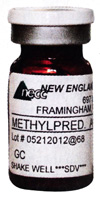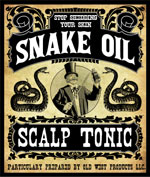What drugs and by which specialties?
When I first looked at the recent release of outpatient prescription drug utilization by Medicare patients, I was immediately struck by how many narcotics were being prescribed by physicians and other medical providers for so many patients. The vast majority of providers prescribed a handful of different and mostly inexpensive opioid drug products to a relatively few patients, On the other hand, a smaller number of providers wrote for many different opioid formulations, some fantastically expensive, for large numbers of patients. Is good medicine being practiced? Is it possible to tell? Should we even care? Of course we should. In this analysis I break down further the utilization of a subset of the most common opioid analgesics, show which medical specialties prescribe the most, and begin to highlight the vast discrepancy in narcotic use among individual providers. From the full CMS database, I extract and make available an Excel file enumerating prescriptions of selected narcotic analgesics by Kentucky medical providers . Continue reading “Narcotic Analgesic Drug Use By Medicare Patients: Continued”
Category: Drugs
Rocky Rollout of Sunshine Act— The Open Payments Program for Physicians.
Another Accountable Care Act initiative with website problems!
For many years now, many public policy concerns have been expressed about the huge amounts of money that pharmaceutical companies and medical device manufacturers give directly to physicians and academic medical centers. An old drug detail-man in Kentucky once told me his company gave Cadillacs to the highest prescribers of his drugs. I doubt that things are that blatant anymore, but so much money flows into individual and departmental pockets that it is difficult to assemble members for expert panels of the FDA, CDC, or other policymaking organizations who are not receiving money from drug and device makers. Full disclosure was supposed to solve the problem, but that does not work. The Open Payments initiative is part of a larger movement for greater transparency and accountability. I plan to write more about this, including my own experience over the years interacting with Pig Pharma and Big Devices.
Continue reading “Rocky Rollout of Sunshine Act— The Open Payments Program for Physicians.”
New Epidemic of Meningitis: Predictable and Unnecessary.
 National news media of all sorts have been reporting about an “epidemic of meningitis” associated with contaminated steroid shots given for back pain. I might as well chime in too. There have been 47 cases identified so far with five deaths, including one Kentuckian. Because hundreds or even thousands of people have received such injections, these numbers will surely increase over the next few weeks. Meningitis is inflammation or infection of the tissues surrounding the spinal cord and brain. The epidural or peri-spinal steroid shots in these cases are injected deeply around the spine and close (if not adjacent) to the meninges. Once the infection breaks through into the spinal fluid or bloodstream, it spreads widely in short order including to the brain. Continue reading “New Epidemic of Meningitis: Predictable and Unnecessary.”
National news media of all sorts have been reporting about an “epidemic of meningitis” associated with contaminated steroid shots given for back pain. I might as well chime in too. There have been 47 cases identified so far with five deaths, including one Kentuckian. Because hundreds or even thousands of people have received such injections, these numbers will surely increase over the next few weeks. Meningitis is inflammation or infection of the tissues surrounding the spinal cord and brain. The epidural or peri-spinal steroid shots in these cases are injected deeply around the spine and close (if not adjacent) to the meninges. Once the infection breaks through into the spinal fluid or bloodstream, it spreads widely in short order including to the brain. Continue reading “New Epidemic of Meningitis: Predictable and Unnecessary.”
Cure and Outrage Coexist Comfortably in American Medicine
The medicine that we are too willing to swallow.
It has only been a lack of time, never of material, that limits the number of entries in this column. (Are any of you out there interested in writing about something?) One has only to open the local newspaper or watch any news program to stumble across things that should cause our ears to perk up, if not make our blood boil. Last Friday’s Courier-Journal provides a typical example. There were no fewer than five different news articles that were exactly on point for issues we have been writing about this past year. The articles highlighted the massive squandering of money and flesh by a broken healthcare system, a substantial risk of the most commonly touted screening procedure, an example of the unconscionable bills that hospitals are willing to present to their patients, a Kentucky hospital being sued for massive but lucrative overtreatment, and a report of still one more widely used treatment for Alzheimer’s syndrome that didn’t work. There seems to be no limit to the amount of abuse the American public is willing to take from the healthcare industry that is supposed to serve them. Fortunately for me, I don’t have much hair to pull out anymore. Continue reading “Cure and Outrage Coexist Comfortably in American Medicine”
